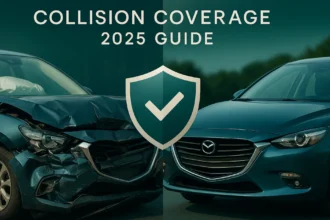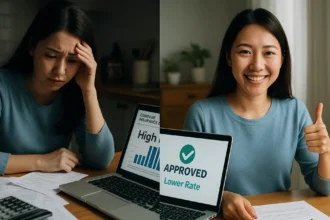Keeping tabs on your debit card balance is an essential money management practice. With debit purchases deducted directly from your checking account, avoiding overdrafts requires knowing your up-to-the-minute balance.
Gone are the days of trekking to the bank or ATM to get your balance. Now there are convenient digital options to check anytime, anywhere in just seconds using your computer or mobile device.
This comprehensive guide covers numerous ways on how to easily check your debit card balance online via banking websites, mobile apps, text alerts, and more. Read on to learn how to monitor your balance with ease.
Overview of Debit Cards and Balances

A debit card grants electronic access to the funds in your linked checking account. It lets you make purchases or withdraw cash, with the money immediately deducted from your account rather than allowing you to carry a balance like credit cards.
Your debit card balance corresponds directly to the actual balance available in your checking account at any given moment. Maintaining awareness of your balance is key to avoiding declined payments or expensive overdraft fees that often range from $30-40 per overage transaction.
With debit purchases impacting your balance in real-time, it’s recommended to check before large purchases and monitor regularly to ensure sufficient cleared funds. Fortunately, technology advancements make checking quick and easy.
READ ALSO: Everything You Need to Know About Checking Your Amex Gift Card Balance Online
Convenient Ways to Check Your Balance Digitally
Thanks to online, mobile and text banking, you can now access up-to-date debit card balances 24/7 without having to visit a bank branch or ATM. Here are some convenient options:
Bank Website Online Banking
The most common way to check balances is by logging into your bank’s website through online banking. Simply access your bank’s site, enter your unique login credentials, and your balance will display prominently on your account summary page.
Mobile Banking App
An even handier method is using your bank’s free mobile app on your smartphone or tablet. Top banking apps like Chase Mobile put account controls like checking balances at your fingertips anytime, anywhere.
SMS/Text Alerts
Many banks offer text banking that lets you check your balance by texting a command like “BAL” to a shortcode number. Just make sure text banking is activated through your bank first. Standard messaging rates apply.
ATM Balance Inquiry
Insert your debit card at any ATM, enter your PIN, and select balance inquiry to view your available balance printed on the receipt. Beware that out-of-network ATMs often charge fees for balance checks.
UPI Apps
Unified Payments Interface (UPI) apps allow you to link bank accounts for easy balance checks in one place through a single mobile app. Leading UPI apps include Google Pay, PhonePe and Paytm.
Account Aggregators
Apps like Mint aggregate all your accounts in one dashboard. This allows easy monitoring of balances from multiple accounts across different banks from one centralized place.
Step-by-Step Guide to Checking Your Balance Online
Checking your up-to-date balance through your bank’s online or mobile banking only takes a few quick steps:
- Access your bank’s website and click the login button or link for online banking.
- Enter your unique username and password credentials on the login page to access your accounts.
- Once logged in, your checking account balance will be prominently displayed on your account summary page.
- To confirm the balance linked specifically to your debit card, select your checking account from the accounts menu if multiple accounts are shown.
- Review your current balance amount before using your debit card for any transactions or withdrawals.
- You can also view balances conveniently through your bank’s mobile app by logging in with your online banking login details.
Check your balance regularly before making debit card purchases to avoid overspending your funds!
Helpful Features for Managing Your Balance
Beyond just displaying your raw balance amount, many bank sites and apps provide helpful peripheral features surrounding your balance:
- Recent transactions – See what activity has impacted your balance.
- Balance alerts – Get notified when your balance goes below a threshold.
- Available balance – Shows what’s actually spendable based on pending activity.
- Balance history – Track changes to your balance over time.
- Low balance warnings – Alerts if your funds are running low.
- Interactive balance visuals – Charts and graphs providing insights.
- Spending analysis – View spending trends by category.
Leveraging these can provide greater context around your account balance and simplify managing your funds.
Tips for Monitoring Your Debit Card Balance
Here are some tips for staying on top of your balance:
- Check your balance routinely, such as before large purchases.
- Set up balance notifications so you get alerts about important changes.
- Review your balance from multiple sources for accuracy.
- Watch for pending transactions that may affect your actual available balance.
- Be aware of times when balances tend to dip, like holidays or vacations.
- Designate a low balance threshold to trigger reviewing spending.
- Transfer funds to avoid overdrafts if your balance runs low.
- Track balances over time to identify spending spikes.
- Use mobile banking for convenient access to balances while on the go.
Proactively monitoring your balance helps you spend wisely within your budget and avoid costly overdraft fees.
READ ALSO: How to Login to Your Discover Credit Card Account Online
Key Benefits of Monitoring Your Balance Digitally
Frequently checking your debit card balance online or through mobile banking offers many benefits:
- Avoid costly overdraft fees by catching low balances early.
- Spot unauthorized or fraudulent transactions right away.
- Prevent embarrassing declined payments by knowing your balance beforehand.
- Enable smarter spending aligned to your actual account funds.
- Provide peace of mind that you won’t overdraw your account unknowingly.
- Empower convenient, real-time money management from anywhere.
- Allow proactive account maintenance when balances get low.
Ultimately, the transparency and control enabled by digital balance access promotes financial responsibility and saves money.
Should You Sign Up for Balance Alerts?
Free balance alerts offered by most banks provide additional oversight by proactively informing you anytime your balance changes or reaches certain thresholds.
Balance alerts are highly recommended for convenience and managing your money responsibly. Benefits include:
No Surprises
You’re informed immediately when anything meaningful happens to your balance instead of having to manually check constantly.
Customization
You choose what balance thresholds trigger alerts, such as when your balance goes below $100 or drops by 50%.
Fee Protection
Alerts warn you if your balance is getting low, so you can avoid overdrafts and associated penalty fees.
Transaction Monitoring
Get notified when new transactions occur, allowing you to stay on top of spending activity with your debit card.
Multi-Channel Delivery
Balance alerts can reach you via your choice of email, text messages or mobile push notification.
Set It and Forget It
Once configured, alerts happen automatically without any routine effort needed on your part.
Signing up for free balance alerts through your bank provides helpful oversight on your account in the background and is highly recommended for convenience and money management. Avoid overdrafts and monitor banking activity effortlessly!
To Recap
From online banking to mobile apps and text alerts, technological advancements have made monitoring your debit card balance easier and more convenient than ever before. No matter where you are, you can now get an up-to-the-minute view of your checking account funds.
Leverage the digital access provided by your bank to check balances frequently before purchases or withdrawals. Enable push notifications and balance alerts for proactive warnings when your funds are getting low.
Regular balance checks give you control over your spending and help you avoid costly overdraft fees. Be sure to review transactions impacting your balance as well for a complete picture of your account activity.
Take advantage of the convenience of online, mobile and text banking to check balances in just seconds anytime. Monitoring your debit card balance digitally promotes financial responsibility and savings.
Make a habit of checking often for peace of mind that you won’t unknowingly overspend. And consider signing up for automated balance alerts to have oversight of your account conveniently in the background without effort.
In today’s digital age, there are no excuses for not knowing your up-to-date account balance at all times. Being balance-aware is a key pillar of smart money management. Use the readily available tools from your bank to check easily and manage funds responsibly.
Frequently Asked Questions About Checking Your Balance Online
How often should I check my debit card balance?
Check your balance frequently, such as once a week at minimum and more often if you actively use your debit card. Ideally, check before major purchases or trips to ensure available funds.
Why do I have different “current” and “available” balances?
Your current balance reflects the raw amount in your account, while your available balance factors in pending transactions that may impact funds, showing how much you can actually spend or withdraw currently.
What should I do if my balance is suddenly lower than expected?
First check your recent transactions and pending activity. Contact your bank if charges you don’t recognize impacted your balance, which could indicate fraud. You can dispute unauthorized charges.
Can I check my balance without logging into my bank account?
Some banks allow balance checks via automated phone system or text banking without logging in. But for account access, most banks require you to log into online or mobile banking to view actual balances.
Is my balance information live when I check online?
Yes, your balance should be updated in real-time with the latest transactions when checking online or via mobile banking. However pending transactions may take a couple days to formally impact your balance.
How can I get alerts when my balance changes?
You can set up free balance alerts through your bank’s online banking or mobile app. Threshold alerts can notify you via email, text or push notification when your balance drops below an amount you pre-set.
In another related article, How to Log In and Manage Your Express Credit Card Online





